Dream & it can happen! Daily posts for: Camino Frances 2013; Via de la Plata/Sanabres 2014; Le Puy, GR65 2015; Invierno, Dos Faros, Portugese, Le Puy 2016; 88 Temple, Japan 2017; Magna Via Francigena 2018; Arles/Argonnes to Santiago 2018 (caminoforalzheimers.blogspot.com); Norte 2019; North Downs Way, England/Via Francigena to Rome 2022; The Way Of St. Francis 2023
Sunday, October 6, 2019
Heading For South America!
We are heading south in just a few days to travel in Argentina, Bolivia and Chile. When time and wifi are available I hope to post photos and comments at;
https://highendeavors.blogspot.com/
When trekking in Patagonia I will be blogging and posting photos here.
Looking forward to this experience!
Geoff
PS. I expect to get back to distance walking next May - July after I thaw from the winter freeze! More later.
Monday, June 24, 2019
Évora - Lisbo (& parts in between): Sun & Cloud 30
The Quieter Side of Portugal
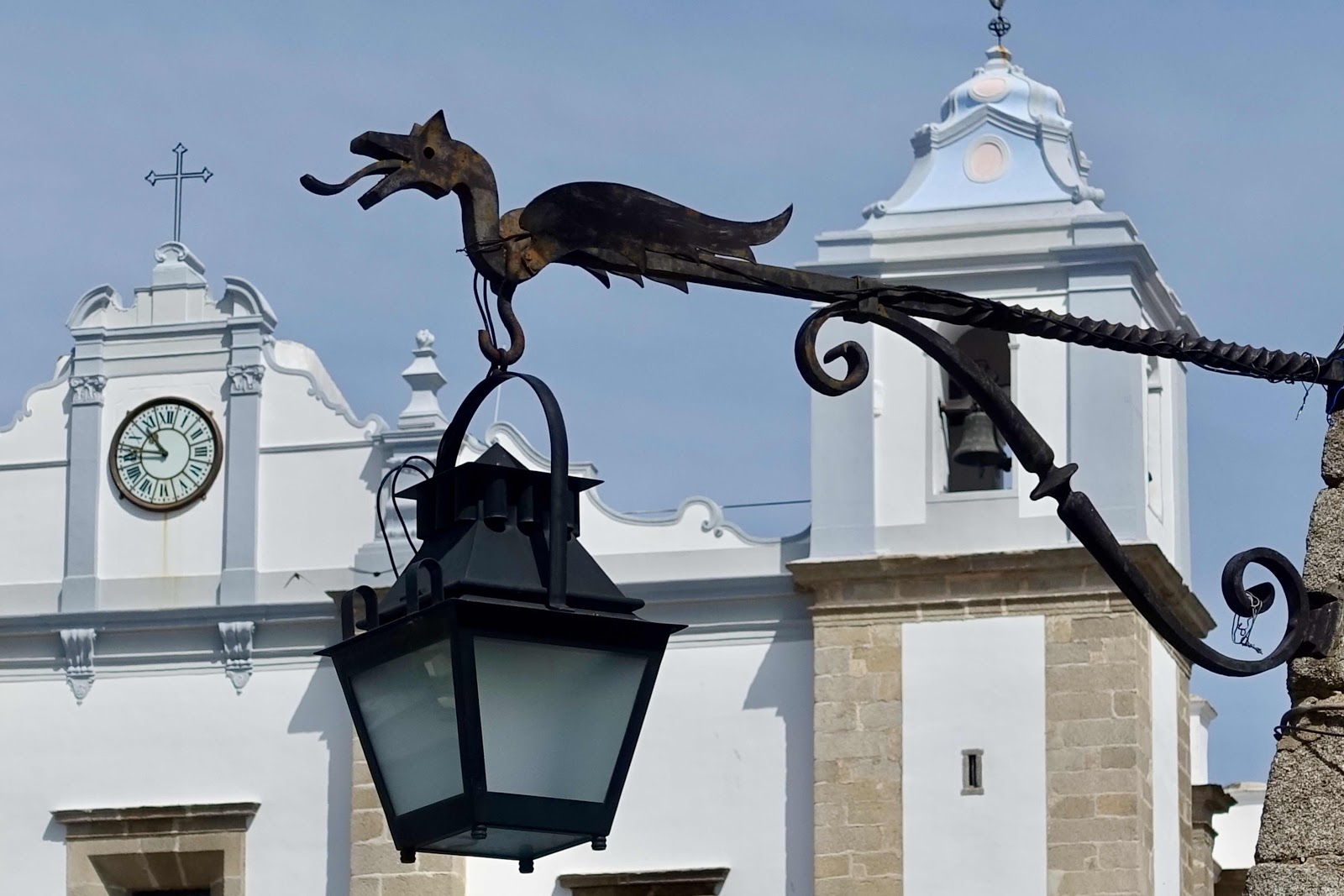

The architecture was really very good.

Some very interesting ways of getting around. No pilgrims, but some heavily loaded bikes were spotted!

The churches while kind of plain from the outside didn’t disappoint on the insides even though Napoleon’s armies striped them of their wealth in the early 1800’s. They also sacked the city and murdered more than a thousand citizens when they finally broke down the walls.


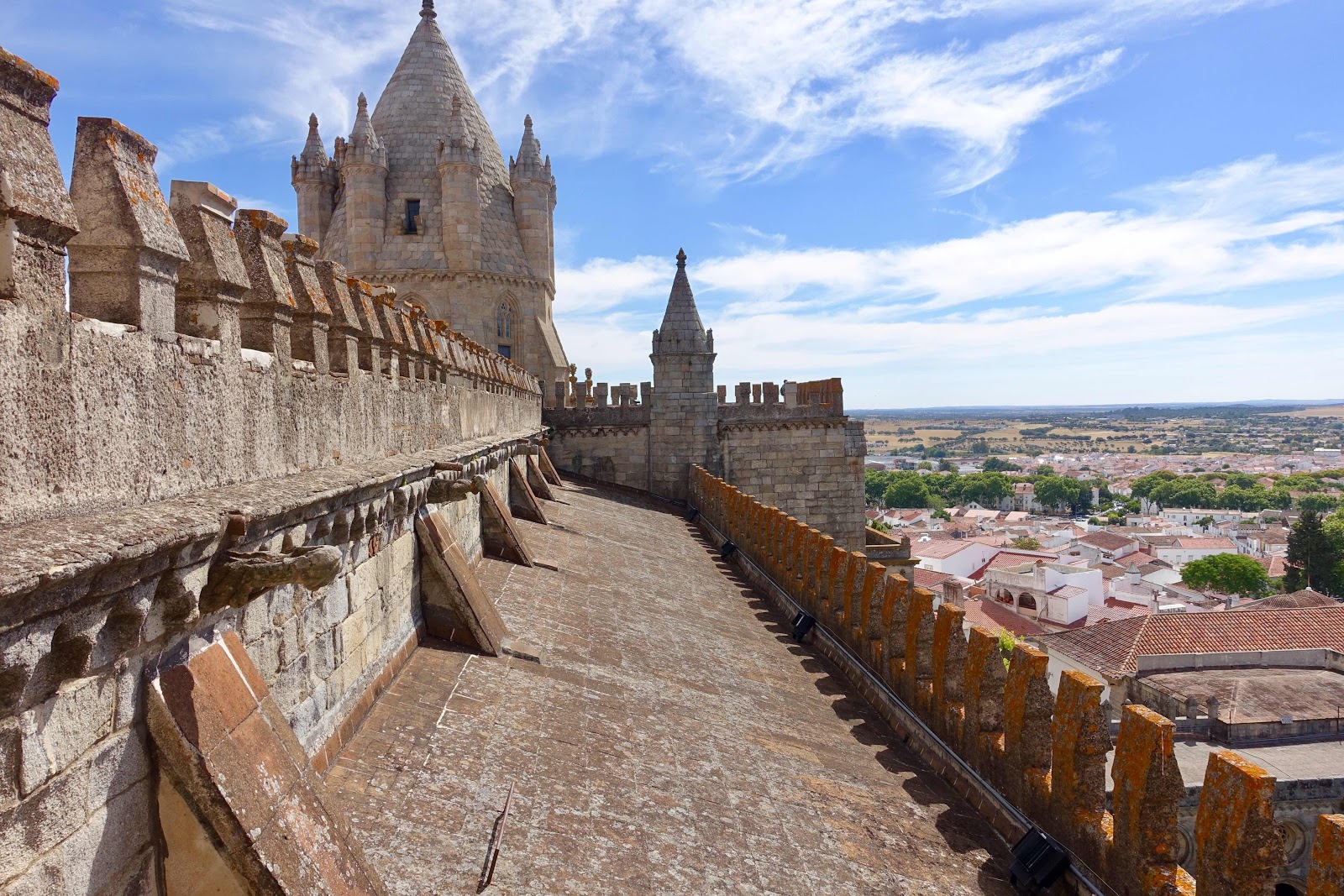





There were often surprises around many corners.


And for sure some of the deserts were quite unique!
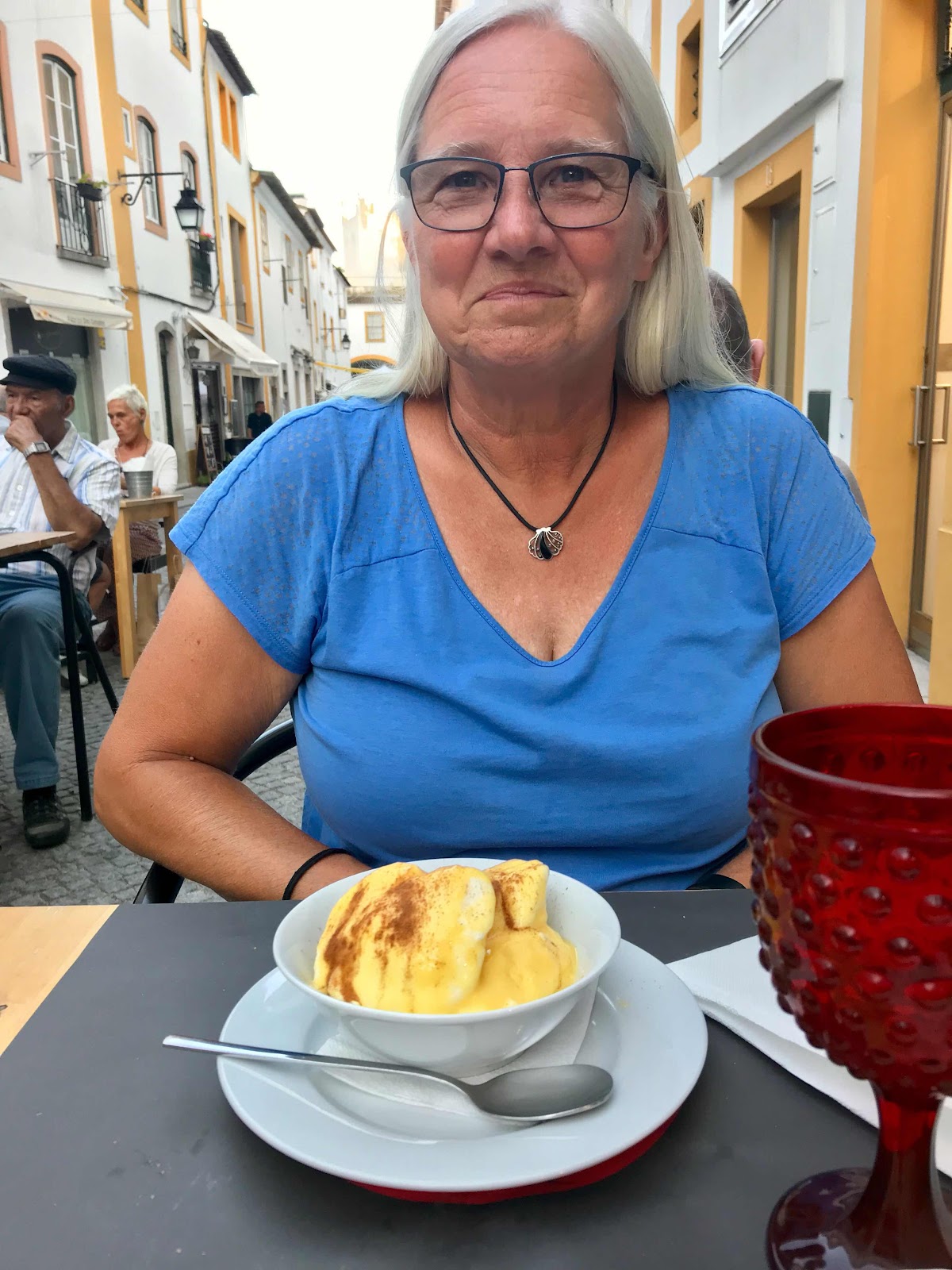
The regional wines were sooooo very good and the pours much more generous than in Spain or France. What’s that about?
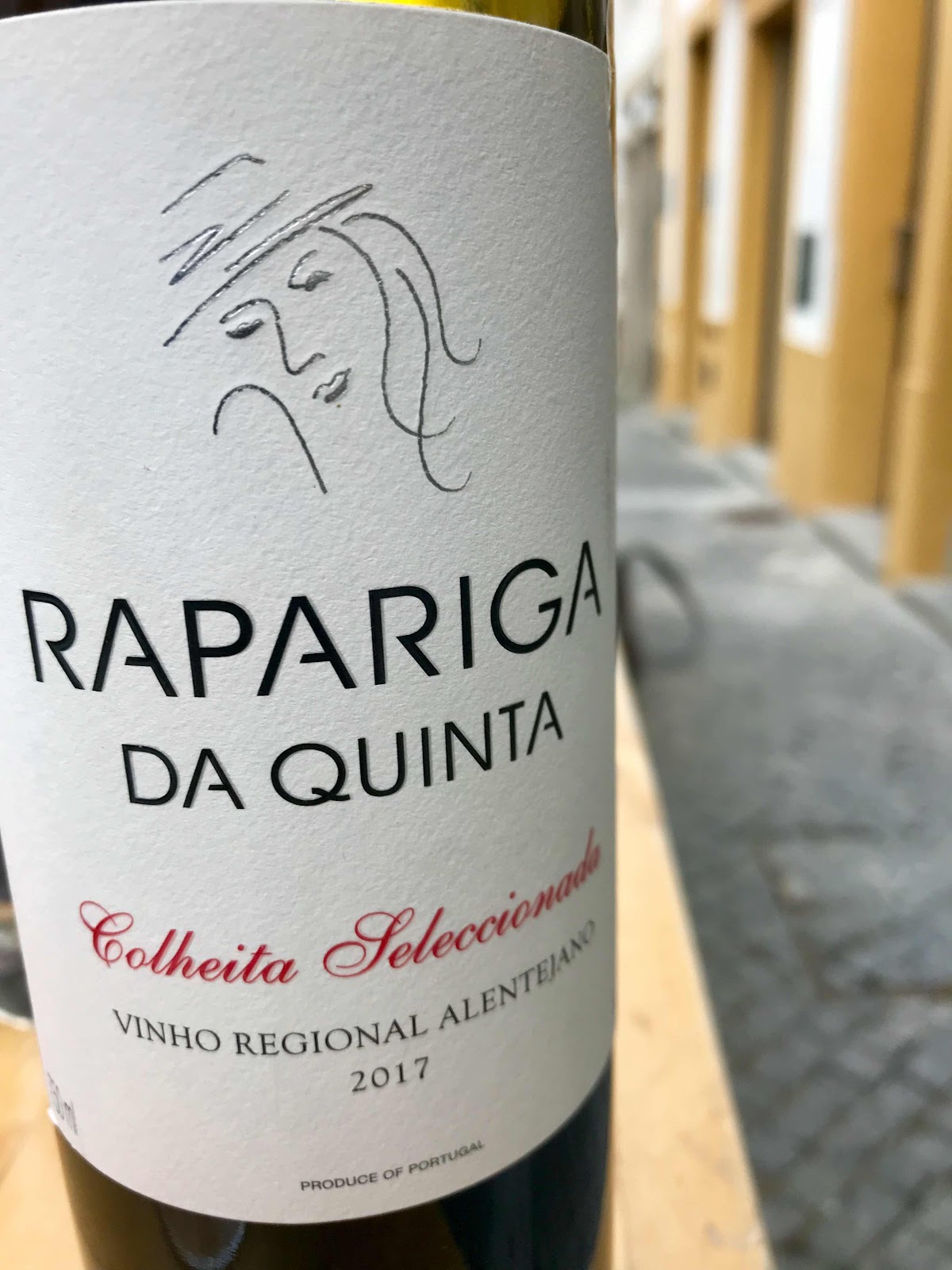
While the aquaduct wasn’t Roman, they had certainly left their mark in the city and the region.

Yesterday we decided to go on a bit of a tour first to purchase a piece of pottery for our collection in Corval
Really enjoyed this woman’s Sunday hat!

...and then onwards to the medieval, fortified town of Monsaraz. The drive there was really lovely if one likes the dry rolling hillsides complete with cork trees, stork nests and vineyards.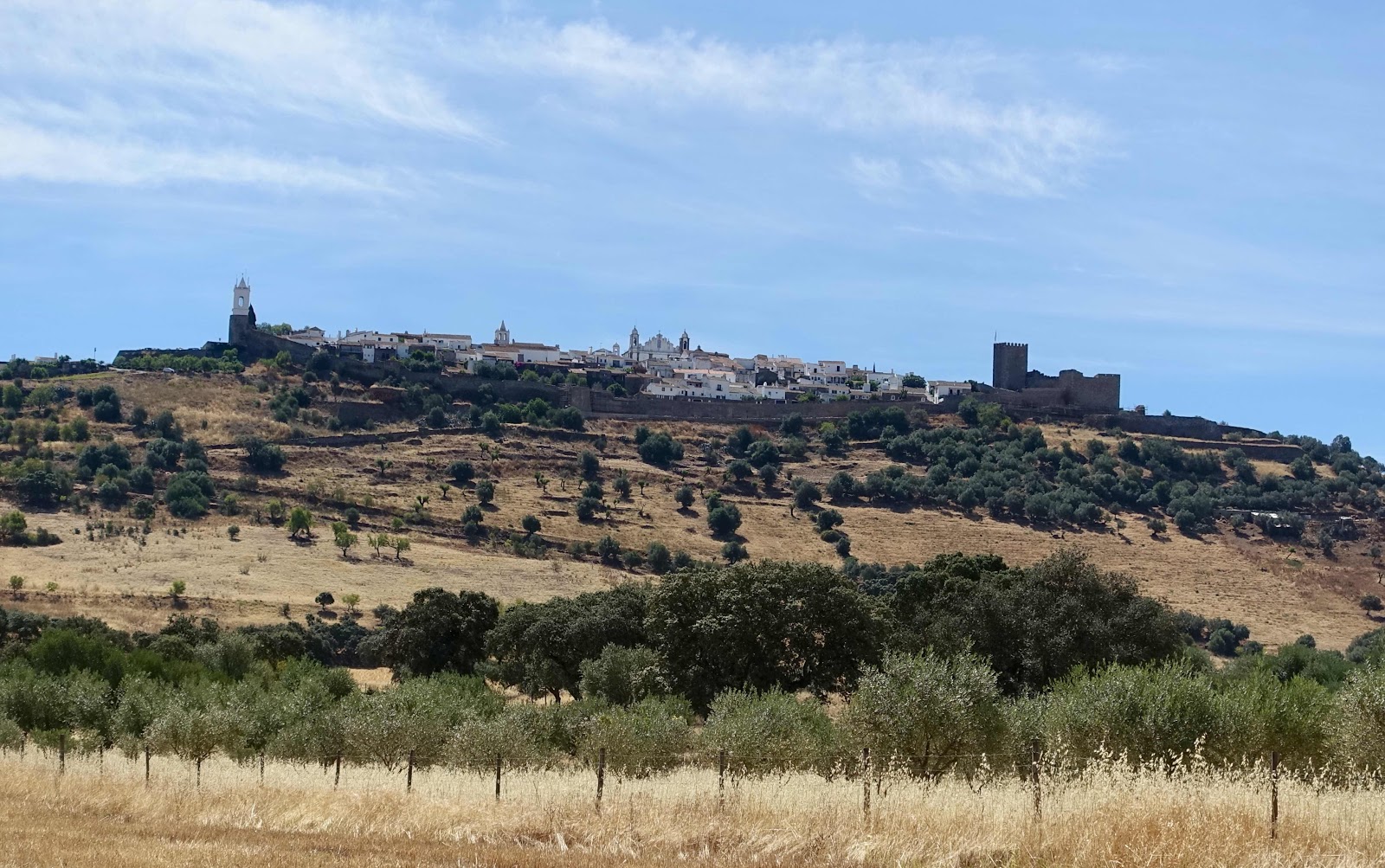

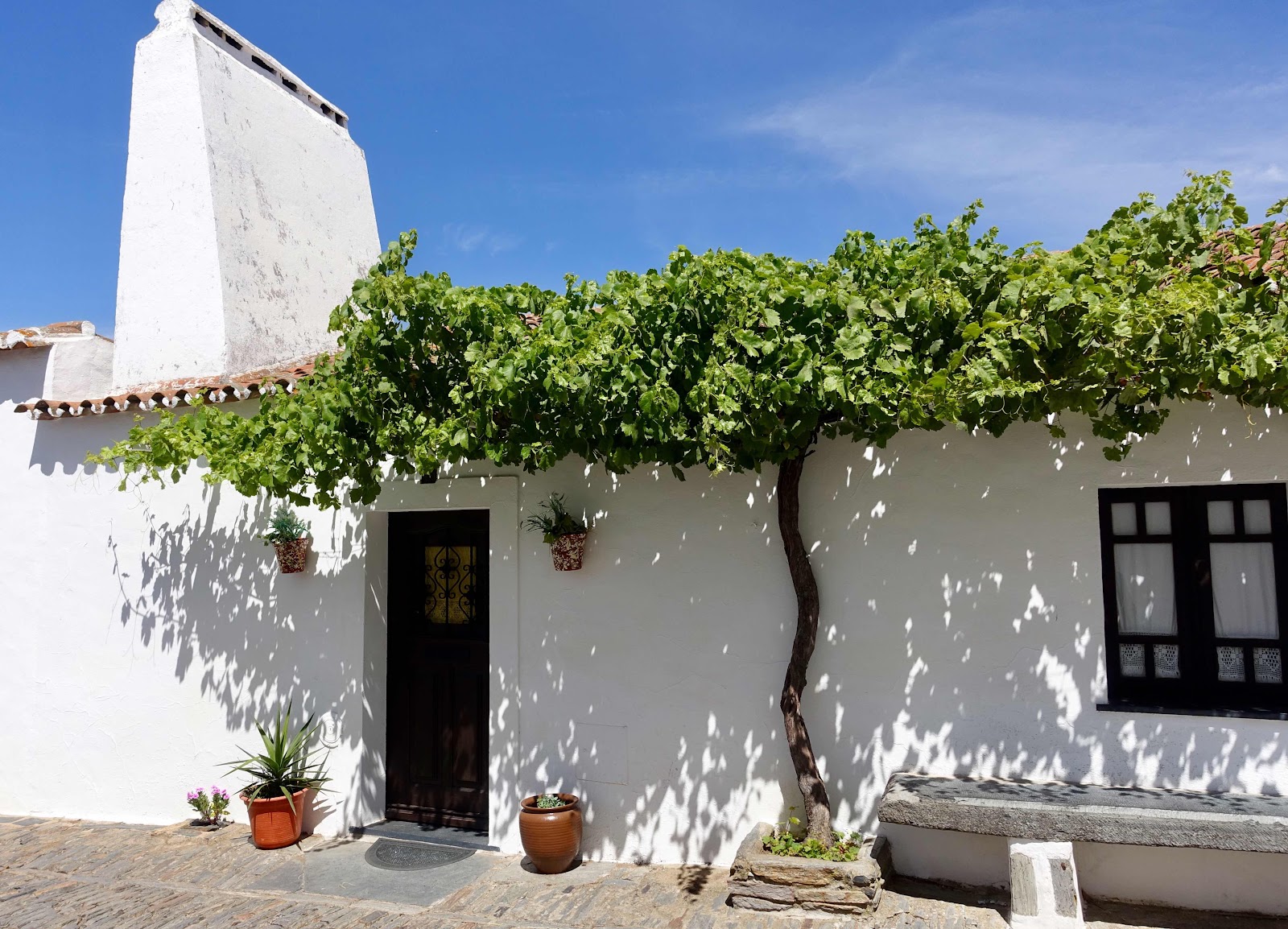
We pretty much had the town to ourselves when we arrived.

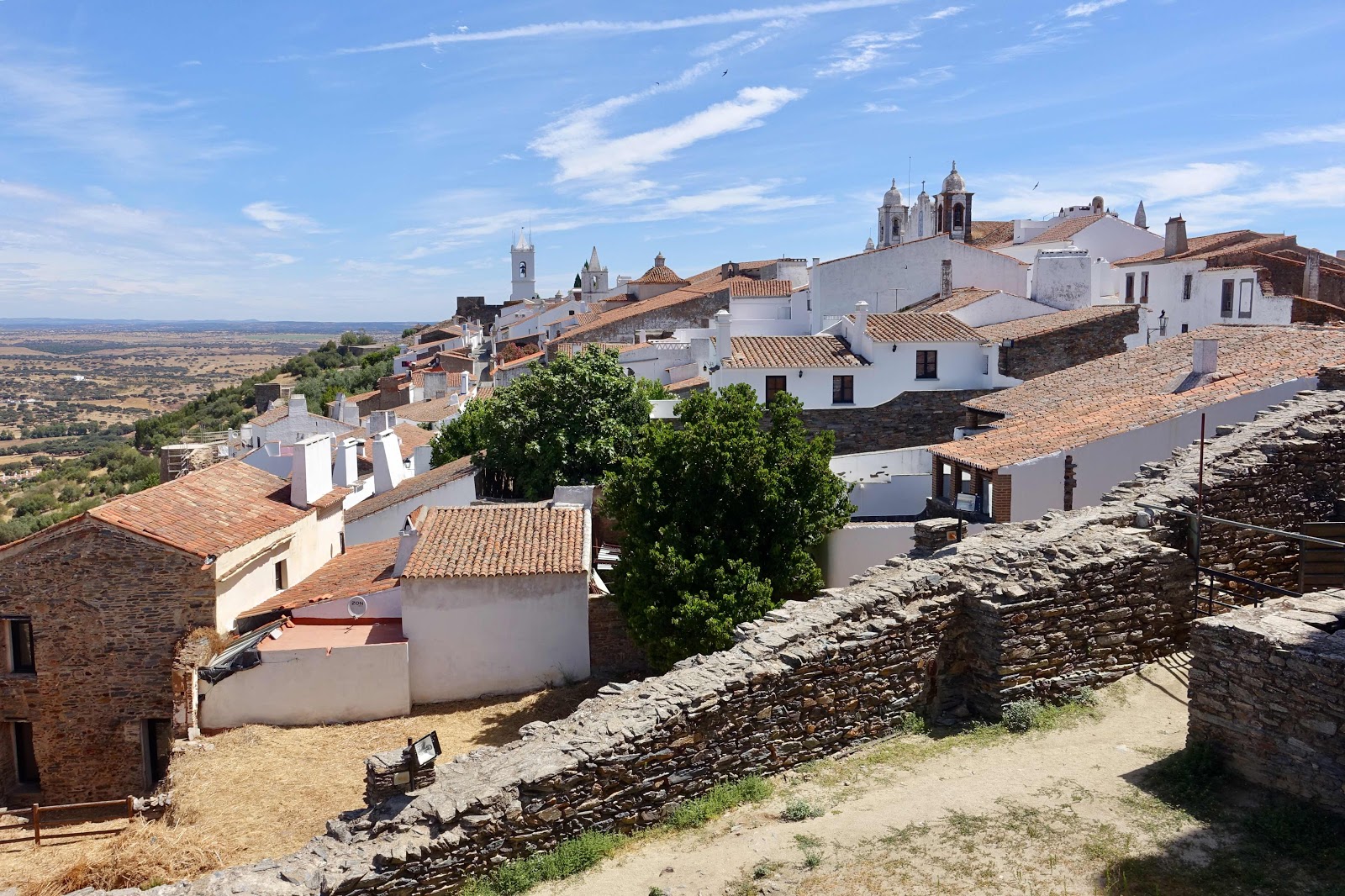
Looking out towards Spain, just on the other side of the bridge.



This was the other business of the owners of the pottery shop where we purchased our small treasured piece.

More Spain just across the lake.

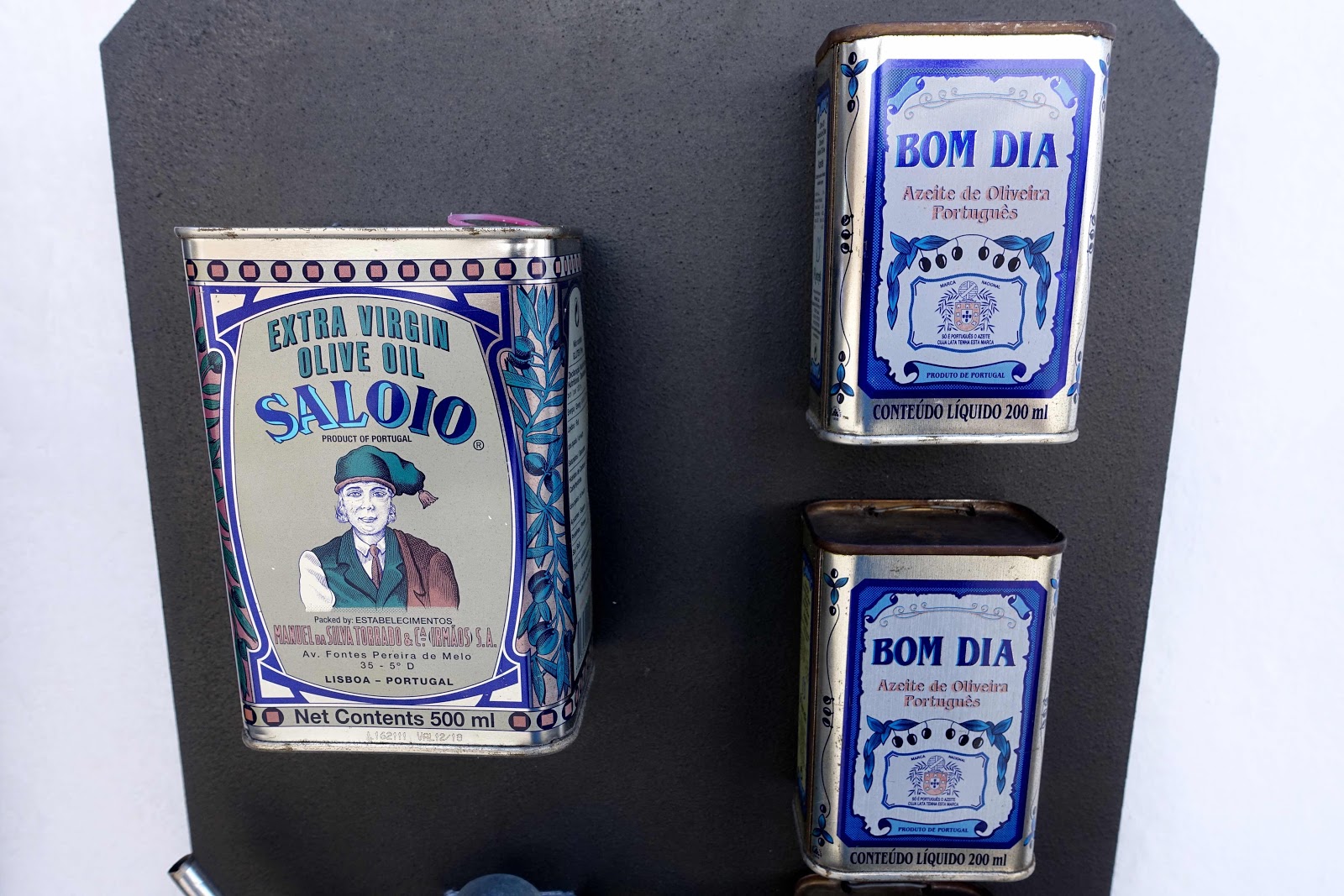
We’d made a reservation at a small wine bar in Évora where they provide a special menu on Sunday afternoons and close late afternoon so their staff can have an evening off. We lucked out as so many are turned away as we had been the prior evening.

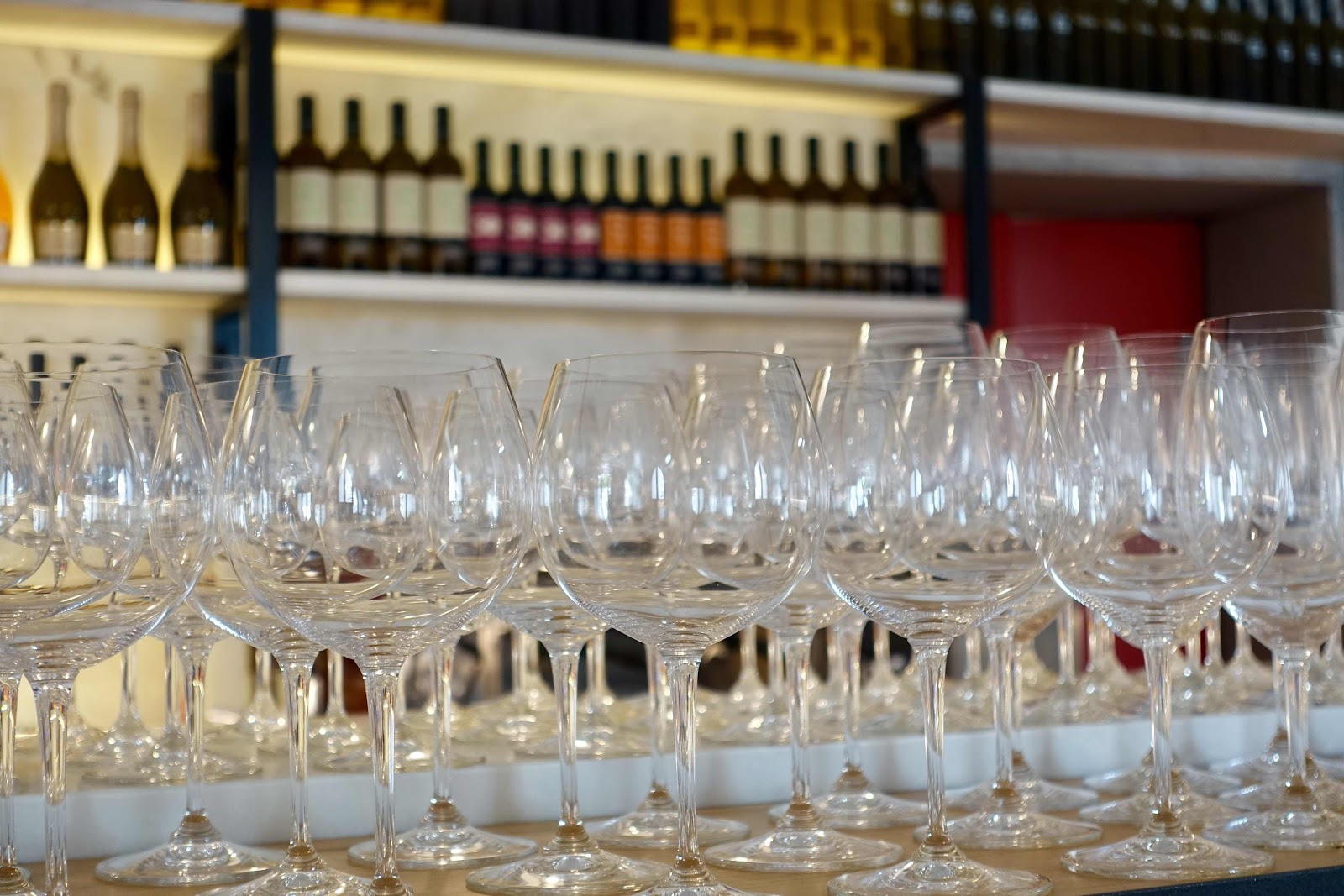
The most interesting dish was prepared in front of us with an egg, finely shredded potato all wrapped with a thin uncooked filleted cod. It’s then all cut up by the server. Amazing! I’ll be trying to make this at home, but not until I’ve done a little training at the gym!!
Squid.

Rabbit.

Dessert was a chocolate moose with sliced apricot on the bottom and a port reduction on top, nicely chilled. We shared one! It was accompanied by a very nice glass of Porto:)

This morning after another brilliant breakfast at our hotel we headed across the country direction Lisbon. We stopped at the Almendres Neolithic megaliths for a look. It’s estimated that they were placed between 6,000 - 4,000 BC. We saw similar stones last year walking the Chemin de Arles in France last year, and of course there are the more famous stones in Brittany, the UK and Ireland, though I understand these are considered somewhat older with suggestions that this area is part of the core for the oldest early man. That might be a local claim as there are also similar claims in both southern France and in Spain. Any way, and interesting stop.


We arrived in Lisbon, drove through the busy traffic and dropped off the car without incident. Always nice to have a car. Always nice to drop it off unscathed!
The past 2-3 posts I’ve focused on specific experiences as we’ve wandered. However it would be an injustice if I didn’t also post on many of the other experiences we’ve had since leaving the Algarve. Annemarie really enjoyed the Algarve and we did have some wonderful walks there and a bit of a vacation too. I personally have preferred the past few days as we drove northward through the eastern parts of south central Portugal. Perhaps it was the very significant absence of tourists and holiday makers. Honestly, not really my thing. I think it was that, but also the history and landscapes that are evident in this area.
Évora was a very interesting city. Lots to see and the meals we enjoyed and wines we sampled from this excellent wine district were very good.
I found several small samples of different honey to return home with. I hope.
The architecture was really very good.
Some very interesting ways of getting around. No pilgrims, but some heavily loaded bikes were spotted!
The churches while kind of plain from the outside didn’t disappoint on the insides even though Napoleon’s armies striped them of their wealth in the early 1800’s. They also sacked the city and murdered more than a thousand citizens when they finally broke down the walls.
There were often surprises around many corners.
And for sure some of the deserts were quite unique!
The regional wines were sooooo very good and the pours much more generous than in Spain or France. What’s that about?
While the aquaduct wasn’t Roman, they had certainly left their mark in the city and the region.
Yesterday we decided to go on a bit of a tour first to purchase a piece of pottery for our collection in Corval
Really enjoyed this woman’s Sunday hat!
...and then onwards to the medieval, fortified town of Monsaraz. The drive there was really lovely if one likes the dry rolling hillsides complete with cork trees, stork nests and vineyards.
We pretty much had the town to ourselves when we arrived.
Looking out towards Spain, just on the other side of the bridge.
This was the other business of the owners of the pottery shop where we purchased our small treasured piece.
More Spain just across the lake.
We’d made a reservation at a small wine bar in Évora where they provide a special menu on Sunday afternoons and close late afternoon so their staff can have an evening off. We lucked out as so many are turned away as we had been the prior evening.
The most interesting dish was prepared in front of us with an egg, finely shredded potato all wrapped with a thin uncooked filleted cod. It’s then all cut up by the server. Amazing! I’ll be trying to make this at home, but not until I’ve done a little training at the gym!!
Squid.
Rabbit.
Dessert was a chocolate moose with sliced apricot on the bottom and a port reduction on top, nicely chilled. We shared one! It was accompanied by a very nice glass of Porto:)
This morning after another brilliant breakfast at our hotel we headed across the country direction Lisbon. We stopped at the Almendres Neolithic megaliths for a look. It’s estimated that they were placed between 6,000 - 4,000 BC. We saw similar stones last year walking the Chemin de Arles in France last year, and of course there are the more famous stones in Brittany, the UK and Ireland, though I understand these are considered somewhat older with suggestions that this area is part of the core for the oldest early man. That might be a local claim as there are also similar claims in both southern France and in Spain. Any way, and interesting stop.
We arrived in Lisbon, drove through the busy traffic and dropped off the car without incident. Always nice to have a car. Always nice to drop it off unscathed!
We found this great little restaurant just down from our hotel which is located well out of the centre as we have a very early 5 am kickoff to our day. The local specialty are baked pies. Mine was based on cod and Annemarie’s had chicken.

Tonight we will return for dinner where I get to try a very different type of cod dish which is apparently quite traditional. Except it will be new to me. After that a few hours of sleep and then a very long 30+ hours getting home to our own beds at around 1am Wednesday morning. Ok, a call to make then off to the restaurant!
Tonight we will return for dinner where I get to try a very different type of cod dish which is apparently quite traditional. Except it will be new to me. After that a few hours of sleep and then a very long 30+ hours getting home to our own beds at around 1am Wednesday morning. Ok, a call to make then off to the restaurant!
Sunday, June 23, 2019
Évora: Hot, Blue and 32
So. What Do You Do With A Leftover Roman Aquaduct?

In Évora there’s this great long, still intact aquaduct that was built by the Romans many years ago. It’s still standing and by all accounts looks to be in excellent condition. After checking out the city sites, which are pretty good, we decided to walk the length of the aquaduct and see what’s happened to it over the past two millennium.

And then as we walked along its path we discovered that many businesses had built themselves into each of the arches. Quiet ingenious!
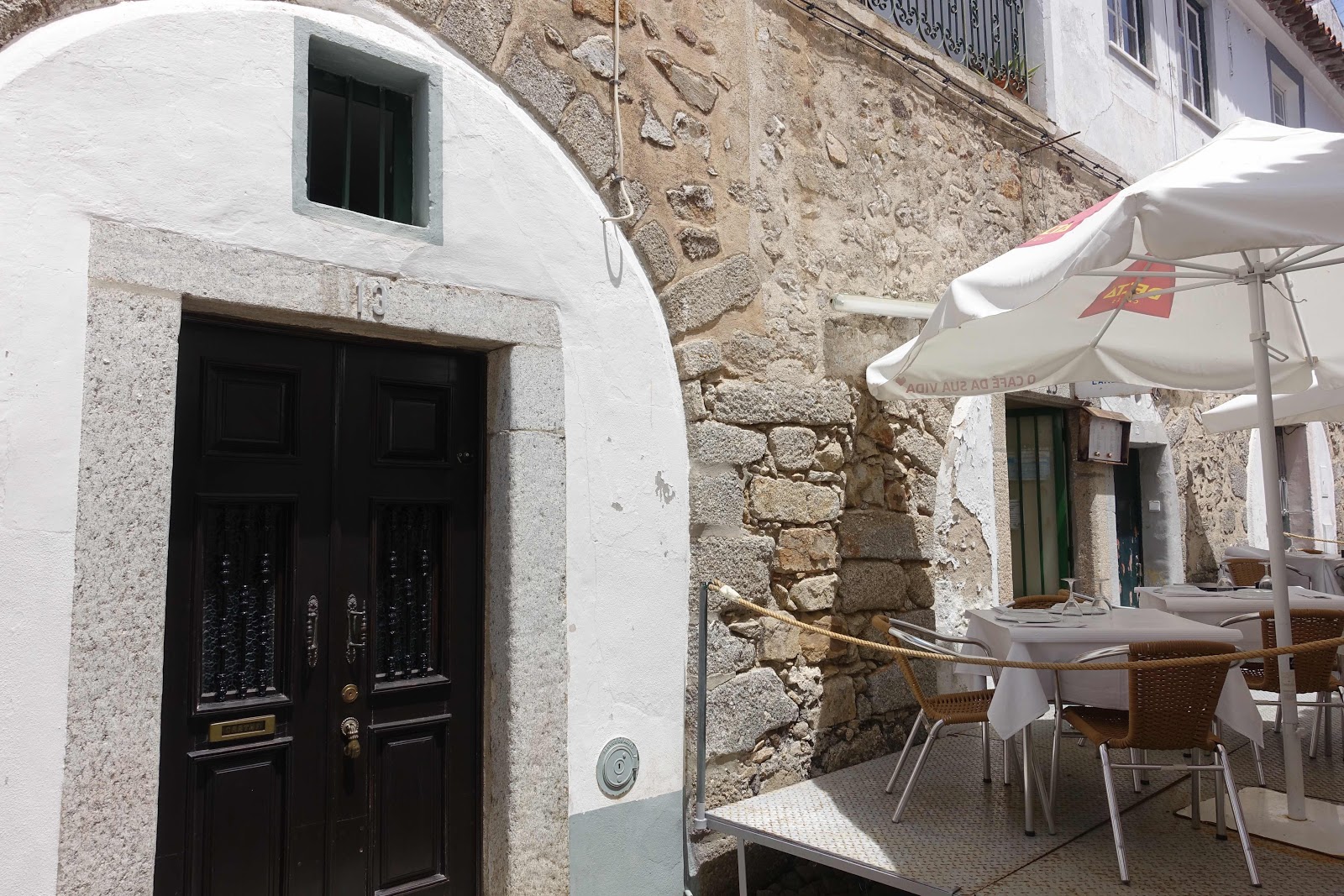
A side road into a parking lot and another part of the city.

Then to our surprise we found a series of residences built into the higher arches. Very thoughtfully done!

Of course there was another major artery inside the city walls. Can’t enter from this side, just the other direction.
Becoming a bit hungry from all our efforts in the heat we stopped and spit a nice fire baked pizza. And we found ourselves incorporated in the city walls!
As we left the old city and crossed the ring road and into the heat from the blazing afternoon sun, we came upon a 16th century fort which had also found a way to include the aquaduct into its design. Pretty smart we thought, or at least I did. In one end...
...and out the other.

Eventually we came upon a beautiful nunnery which had used the aquaduct as its front gate and supporting wall for its domestic animals. Pretty efficient!


Neil and Sarah, they had a nice grove of Plane Trees by the front gate. I wondered if we could find one of these in Canada? Notice the fencing built into the aquaduct. Pretty smart!

There was a guard tower at one point built on top of the aquaduct. Pretty smart, but I started to have my first doubts.
Then you could see where the aquaduct had been used as a gate in the distant past. A Christian icon had even been built into the pillar. But still I was doubting, though these adjustments do sometime occur.
As we got further and further out of town we started to pass through some rural villages. The agricultural and animal husbandry processes started to also use the wall. Sheesh it was hot!
And there was a nice grouping of flowering cacti which was using the shade and dew provided by the aquaduct. The bees were certainly happy about this!
We noticed a really nice tower which perhaps the Moors used to keep an eye on their aquaduct as history passed it along to their care.

However, the very best was waiting for us at the end of our aquaduct walk. There was a beautiful monastery waiting for us. One of those lovely things one discovers on a spontaneous, mindful walk.
Simple, elegant and unfortunately closing just as we arrived. Oh well. It was all about the walk and discovery.

Then there were the views back towards Évora. Some with flowers on the walls.
Others without.
And then we started the long walk back to town. Sunny, hot walk, but we were both satisfied with what we’d found.

However, as I wrote this and went through my photos, the doubts I’d experienced on the walk began to surface. The design, guard towers and style just didn’t quite add up. I’ve seem many Roman aquaducts in my travels. I checked in with Mr Google and low and behold it turns out that this Roman aquaduct isn’t quite as old as I first thought. As a mater of fact, the Romans were long retired and living underground in Rome when it was built! Here’s what I found,

In Évora there’s this great long, still intact aquaduct that was built by the Romans many years ago. It’s still standing and by all accounts looks to be in excellent condition. After checking out the city sites, which are pretty good, we decided to walk the length of the aquaduct and see what’s happened to it over the past two millennium.
Things kind of got rolling when we found this portion of the aquaduct in town.
And then as we walked along its path we discovered that many businesses had built themselves into each of the arches. Quiet ingenious!
A side road into a parking lot and another part of the city.
Then to our surprise we found a series of residences built into the higher arches. Very thoughtfully done!
Of course there was another major artery inside the city walls. Can’t enter from this side, just the other direction.
Becoming a bit hungry from all our efforts in the heat we stopped and spit a nice fire baked pizza. And we found ourselves incorporated in the city walls!
As we left the old city and crossed the ring road and into the heat from the blazing afternoon sun, we came upon a 16th century fort which had also found a way to include the aquaduct into its design. Pretty smart we thought, or at least I did. In one end...
...and out the other.
Eventually we came upon a beautiful nunnery which had used the aquaduct as its front gate and supporting wall for its domestic animals. Pretty efficient!
Neil and Sarah, they had a nice grove of Plane Trees by the front gate. I wondered if we could find one of these in Canada? Notice the fencing built into the aquaduct. Pretty smart!
There was a guard tower at one point built on top of the aquaduct. Pretty smart, but I started to have my first doubts.
Then you could see where the aquaduct had been used as a gate in the distant past. A Christian icon had even been built into the pillar. But still I was doubting, though these adjustments do sometime occur.
As we got further and further out of town we started to pass through some rural villages. The agricultural and animal husbandry processes started to also use the wall. Sheesh it was hot!
And there was a nice grouping of flowering cacti which was using the shade and dew provided by the aquaduct. The bees were certainly happy about this!
We noticed a really nice tower which perhaps the Moors used to keep an eye on their aquaduct as history passed it along to their care.
However, the very best was waiting for us at the end of our aquaduct walk. There was a beautiful monastery waiting for us. One of those lovely things one discovers on a spontaneous, mindful walk.
Simple, elegant and unfortunately closing just as we arrived. Oh well. It was all about the walk and discovery.
Then there were the views back towards Évora. Some with flowers on the walls.
Others without.
And then we started the long walk back to town. Sunny, hot walk, but we were both satisfied with what we’d found.
However, as I wrote this and went through my photos, the doubts I’d experienced on the walk began to surface. The design, guard towers and style just didn’t quite add up. I’ve seem many Roman aquaducts in my travels. I checked in with Mr Google and low and behold it turns out that this Roman aquaduct isn’t quite as old as I first thought. As a mater of fact, the Romans were long retired and living underground in Rome when it was built! Here’s what I found,
The construction of Agua de Prata Aqueduct was started by King João III in 1532. Under the direction of the royal architect Francisco de Arruda, 11mi (18km) of aqueduct were built starting in Divor estate, where it gets its supply of water, to the centre of Evora.
Oops. Things did seem a bit off, but I’d written most of the blog before properly researching my topic! Sorry Ken, cutting a few corners. Well, we did have a great walk and saw lots of interesting things. And it could have been Roman!
Oops. Things did seem a bit off, but I’d written most of the blog before properly researching my topic! Sorry Ken, cutting a few corners. Well, we did have a great walk and saw lots of interesting things. And it could have been Roman!
Subscribe to:
Posts (Atom)
